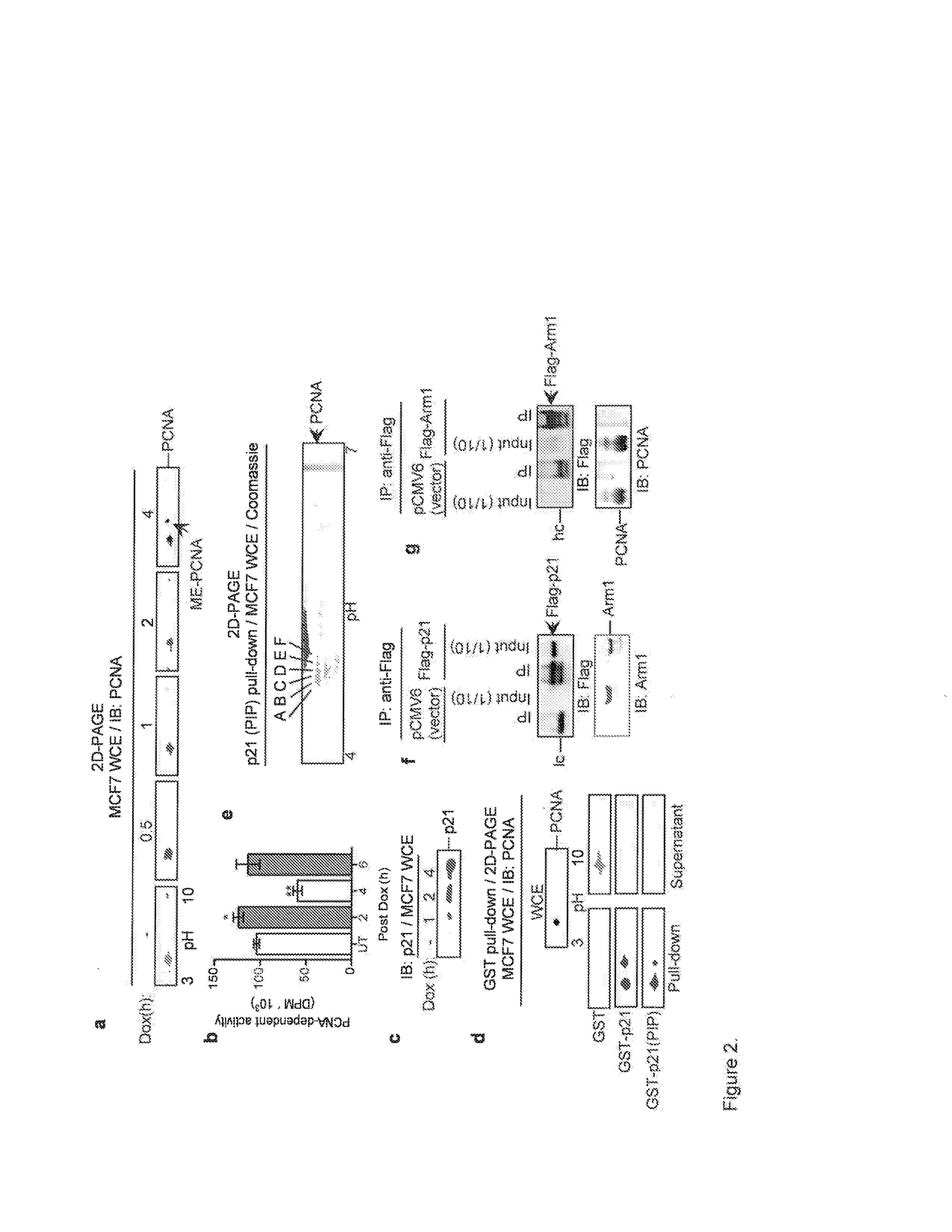Method for enhancing efficacy and selectivity of cancer cell killing by DNA damaging agents
a dna damaging agent and cancer cell technology, applied in the field of dna damaging agents for the treatment of cancer, can solve the problems of many unwanted side effects, and achieve the effect of improving the efficacy and selectivity of dna damaging agents and being less toxi
- Summary
- Abstract
- Description
- Claims
- Application Information
AI Technical Summary
Benefits of technology
Problems solved by technology
Method used
Image
Examples
example 1
Cell Culture
[0033]MCF7 and SK-Br-3 cells were obtained from ATCC and maintained in DMEM or McCoys 5A supplemented with 10% FBS and antibiotics at 37° C., 5% CO2. A human Flag-tagged Arm1, Rev1, and p21 expression construct (Origene) were transiently transfected into SK-Br-3 cells with Fugene 6 (Roche) and extracts generated after 24 h. Lentiviral shRNA particles were obtained from Open Biosystems and stably expressing clones selected with puromycin and confirmed by GFP expression and Q-PCR (FIG. 10). Clonogenic survival assays were performed following exposure to Dox (Sigma) or UV-C using a Spectrolinker (Spectronics) for 4 h. Surviving colonies were stained with methylene blue and counted 2 weeks after treatments.
example 2
[0034]The assay was performed as previously described.37 Cell extracts were assayed with [3H-methyl]-SAM (NEN) for 1 h before equilibration with 100 mM NaOH with 1% SDS and spotting onto filter paper folded into an accordion pleat and placed above scintillation fluid. Diffused 3H-methanol was detected the following day.
example 3
Protein Expression and Purification
[0035]Chromatography was performed using a Biologic DuoFlow (BioRad) using phenyl Sepharose HP (HiTrap) and Superdex S200 columns (GE Biosciences). Recombinant PCNA was expressed either as a calmodulin binding peptide fusion (CBPPCNA) using the pDual expression system and purified using calmodulin agarose (Stratagene) or a 6× His-tagged fusion expressed in pET303 / CT-His (InVitrogen) and purified with Ni2+ Sepharose (GE Biosciences). His-tagged human Arm1 was cloned into a baculovirus expression vector and expressed in Tni insect cells (Allele Biotech., Inc.). GST, GST-p21, GST-p21(PIP), and GST-Rad18 were expressed in BL21(DE3) cells and isolated using glutathione Sepharose (GE Biosciences). GST-p21 was isolated from inclusion bodies as described38. Anti-Flag immunoprecipitations were performed with anti-Flag M2 Affinity Gel (Sigma). p21(PIP)-affinity beads were generated by covalently coupling a synthetic peptide (Anaspec) to CH-Sepharose (GE Bios...
PUM
| Property | Measurement | Unit |
|---|---|---|
| Acidity | aaaaa | aaaaa |
Abstract
Description
Claims
Application Information
 Login to View More
Login to View More - R&D
- Intellectual Property
- Life Sciences
- Materials
- Tech Scout
- Unparalleled Data Quality
- Higher Quality Content
- 60% Fewer Hallucinations
Browse by: Latest US Patents, China's latest patents, Technical Efficacy Thesaurus, Application Domain, Technology Topic, Popular Technical Reports.
© 2025 PatSnap. All rights reserved.Legal|Privacy policy|Modern Slavery Act Transparency Statement|Sitemap|About US| Contact US: help@patsnap.com



